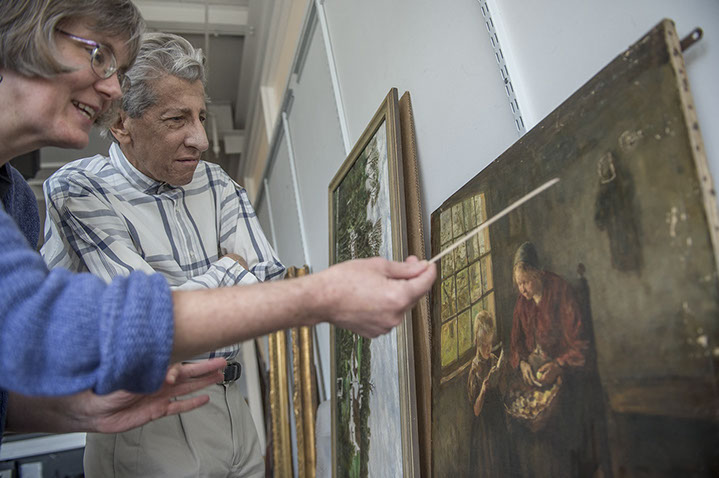Albert Albano
2017 MARTHA JOSEPH PRIZE
Growing up in Flushing, N.Y, the son of a mason and builder/contractor in Manhattan, Albert Albano started working in construction at age 13. He liked learning about architecture, but found the field and his life becoming somewhat claustrophobic.
At 17, partly to get away and partly to surf, he enrolled in the University of Natal in Durban, South Africa. But he deeply disliked living under an apartheid regime.
He came home and enrolled at Hofstra University, where he earned his bachelor's degree in art history and went on to complete his postgraduate certificate in art conservation, (Cooperstown Graduate Program, and his master’s from SUNY Oneonta.
For the next two decades, Albert held art conservation positions in some of the world’s most prestigious institutions, including the Solomon R. Guggenheim Museum, the Philadelphia Museum of Art, the Museum of Modern Art, and the Phillips Collection. He learned from, and collaborated with a “who’s who” of conservators, museum administrators and contemporary artists. While at MOMA, for example, he worked with everyone from Francis Bacon and Anselm Kiefer to Frank Stella and Andy Warhol.
“I like to think I was a bright young man who had the extraordinary good fortune to have the incredible people who mentored me and shepherded me along,” Albert says of his extensive training and experience that make him a recognized peer of leading art conservators throughout the U.S..
He came to Cleveland in 1996, when he accepted the position of executive director of ICA Art Conservation. Albert led the critical transition of the organization from a tenant and partner institution affiliated with Oberlin College to its current role as an independent nonprofit based in Cleveland's Ohio City neighborhood. He also pioneered the redevelopment of what is now known as the Hingetown District by paving the way for the Transformer Station gallery and the Music Settlement's satellite in the Bop Stop building.
“Albert made the pioneering move to Ohio City at a time when a lot of people probably thought he was crazy,” says Fred Bidwell (CAP 2013), co-owner of the Transformer Station with his wife, Laura (CAP 2013). “Today that decision is totally validated because it’s now one of the liveliest parts of Cleveland.”
Through his dynamic and imaginative leadership, Albert has had a huge impact on improving and preserving works of public art that are synonymous with Cleveland's identity. One of his favorite landmark projects was his tireless efforts to relocate and preserve the iconic Viktor Schreckengost pachyderm sculptures that hold great nostalgic value for any Clevelander who visited the zoo as a child and are now part of the Cleveland Museum of Natural History.
“I come from a pretty snazzy, elitist art background,” Albert says with his trademark New York accent and sparkling smile. “But I get a lot of satisfaction out of that project because they mean so much to Clevelanders.”
He was instrumental in helping John Hemsath and his team at the State Theater in Playhouse Square acquire a Save America’s Treasures grant to complete a thorough conservation program on artist James Daugherty’s acclaimed mural cycle in the lobby. Albert also partnered with Jeff Patterson to lead the rescue, conservation and public installation of a trove of WPA-era murals and sculptures located in Cuyahoga Metropolitan Housing Authority properties throughout the city. Under Albert, ICA recently performed a state-of-the-art conservation of Cleveland's "Free Stamp" sculpture by Claes Oldenburg and Coosje van Bruggen.
Albert is a fellow in the American Institute for Conservation and was named a Rome Prize fellow in 2012.
Diagnosed with a rare form of leukemia several years ago, Albert is now semi-retired and focusing on several key strategic ICA initiatives, when he’s not enjoying time with his wife, Ann Craddock Albano, executive director of The Sculpture Center.
As for his ongoing commitment to his work and why conservation is so vital, Albert concludes: “I can honestly say I’m a bit fanatical about historic preservation and material culture conservation. I believe in the layered perception of history and a continual evolution of not seeing ourselves in this finite moment, but having some mature, thoughtful perspective of the past, being able to speculate about how we want to use all of it to move ourselves forward.”

Cleveland Arts Prize
P.O. Box 21126 • Cleveland, OH 44121 • 440-523-9889 • info@clevelandartsprize.org